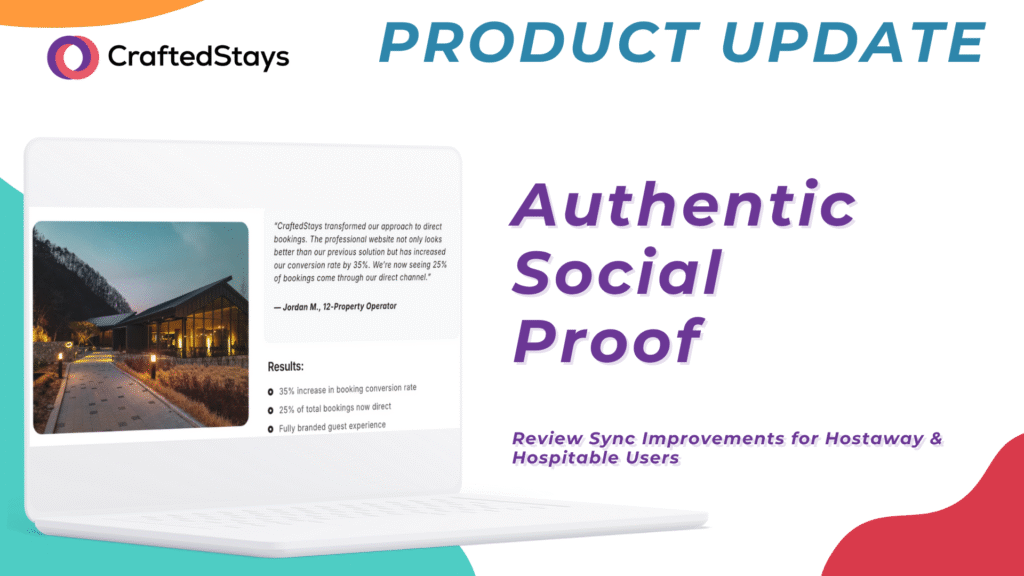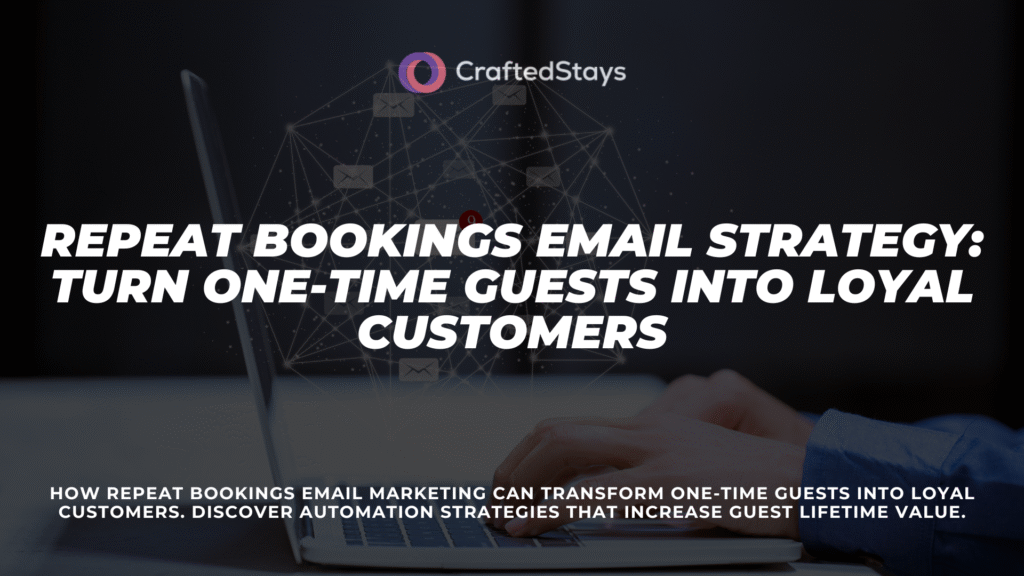Most vacation rental operators focus on filling their calendars with new bookings. But what if the secret to sustainable growth isn’t finding more guests—it’s bringing back the ones you already have? Repeat bookings email marketing is the most overlooked revenue driver in the short-term rental industry. While you’re spending time and money acquiring new guests through online travel agencies, your past guests are booking their next vacation somewhere else. The solution? A systematic email strategy that keeps you top of mind and makes rebooking effortless. Why Guest Retention Matters More Than You Think 💡 Consider this: a guest who books your property once for $2,000 seems valuable. But a guest who books three more times over the following years? That’s an $8,000 customer. This concept—guest lifetime value—transforms how you should think about marketing. Beyond the obvious financial benefits, focusing on repeat bookings email marketing delivers three critical advantages: Increased profit margins 💰. Direct bookings eliminate platform fees that can eat up 15-20% of your revenue. You keep more money, and guests often save too—creating a genuine win-win situation. Brand loyalty and relationships 🤝. When you communicate directly with guests, you build a connection that transcends a simple transaction. You become their trusted accommodation partner for that destination, not just another listing in a sea of options. Business resilience 🛡️. Relying solely on third-party platforms puts your business at risk. Account suspensions happen. Algorithms change. Diversifying your booking sources protects your revenue stream and gives you control over your business destiny. The Foundation: Build Your Email List First 📧 Before you can implement any repeat bookings email marketing strategy, you need email addresses. This seems obvious, but many operators miss a crucial opportunity: collecting multiple emails per reservation. Think about it—a six-bedroom property that sleeps twelve people represents one booking but potentially twelve email addresses. Each person in that group is a potential future guest who might book for their own family trip, work retreat, or friend gathering. Tools like Stay Fi and similar Wi-Fi-based collection systems automate this process. Guests connect to your wifi, opt into communications, and you’ve instantly expanded your reach. If you’re collecting emails manually, make it part of your welcome process and follow proper consent protocols. The key is starting now ⏰. Even if you’re not ready to launch email campaigns, begin building your list today. Future you will thank present you. Email Sequences vs. Campaigns: Know the Difference 🔄 Successful repeat bookings email marketing uses two distinct approaches, and understanding the difference is critical. Automated sequences (also called workflows or flows) are evergreen email series triggered by specific actions—typically when a guest checks out. Once set up, they run automatically without any manual effort. A guest checks out on Tuesday, and your sequence begins sending value-driven emails over the next 200-365 days. Campaigns are one-time broadcasts sent to your entire list for time-sensitive opportunities—a last-minute opening, a local event like a festival or race, or seasonal promotions. These require manual creation and scheduling but serve specific strategic purposes. Most operators should invest 80% of their email marketing energy into building solid automated sequences, with occasional campaigns for special situations. What Makes an Effective Email Sequence? ✨ The most common mistake in repeat bookings email marketing is leading with discounts. Sending “10% off your next stay!” every few weeks trains guests to expect deals and attracts price-sensitive customers who aren’t your ideal repeat bookers. Instead, focus on value-first content that triggers emotional connections to their experience. Your sequence might look like this: 📅 Days 1-2 after checkout: Thank you message with direct booking information🎁 Days 3-5: Limited-time direct booking incentive (if you choose to offer one)💭 Day 30: “Can you believe it’s been a month?” nostalgic message with local updates🗺️ Day 60: Insider tips they missed—hidden gems locals know about❤️ Day 90: Personal story about why that destination is special to you🍂 Day 120: Seasonal preview of what’s coming up📆 Day 180: Gentle reminder about rebooking for next year Notice how only one email directly pushes a discount. The rest provide value, trigger memories, and maintain connection. This approach attracts quality guests who choose you for the experience, not the price. Keep emails conversational and personal—plain text format, signed with real names, and written like you’re messaging a friend. Skip the heavy branding, logos, and corporate templates. Authenticity builds trust ✓ The Reply-To Strategy That Changes Everything 💬 Here’s a simple tactic that dramatically improves engagement: invite replies instead of always pushing action buttons. Instead of “BOOK NOW” as your only call-to-action, try: “Thinking about visiting for [local event]? Reply to this email and let us know—we’d love to help you secure dates.” This approach works particularly well for older demographics who are less comfortable navigating booking sites independently. They want human connection, and giving them permission to reply reduces friction and builds a relationship. You’ll be surprised how many conversations start this way, leading to bookings you wouldn’t have captured otherwise 🎯 Social Media’s Real Role (It’s Not What You Think) 📱 Many vacation rental operators waste countless hours trying to build social media followings, hoping it will drive bookings. The reality? Social media for vacation rentals works best as social proof, not discovery. Your Instagram or Facebook presence serves one primary purpose: validation. When potential guests see your social icon on your direct booking site and click through to find active, authentic content, it builds trust. They see you’re legitimate, engaged, and professional. The winning strategy? One quality post per week, scheduled in advance. Batch-create content quarterly—spend a few hours creating and scheduling 12-15 posts, then forget about it for three months. Cross-post to both Instagram and Facebook to maximize efficiency. Focus on behind-the-scenes content, guest experiences (with permission), local highlights, and property updates. Don’t stress about followers, engagement rates, or viral content. You’re building credibility, not becoming an influencer 👍 SMS Marketing: Powerful But Proceed With Caution ⚠️ Text messages have 98% open rates compared to email’s sub-50% rates. That’s compelling. But










